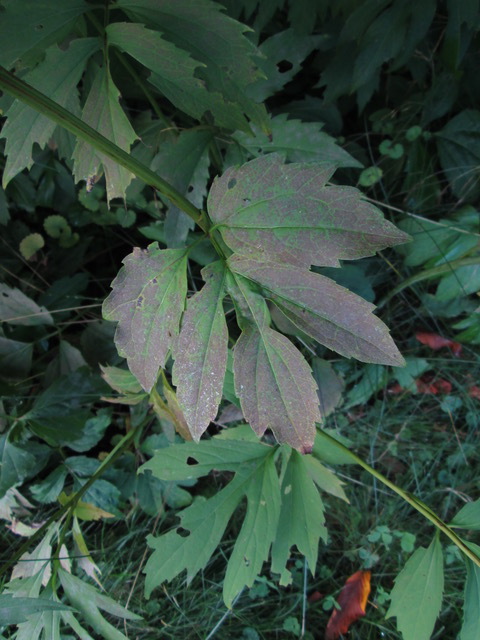Clean air is a point of pride in Western North Carolina. But it hasn’t always been that way.
Fifteen years ago, the visibility in the area was less than a mile, according to Susan Sachs, education branch chief with Great Smoky Mountains National Park in Haywood County. And although local levels of the toxic gas ozone have decreased in recent decades throughout WNC due to the Clean Air Act of 1970, Sachs says ongoing monitoring is crucial.
“With climate change, the ozone level could change again,” she says. “It’s a long-term commitment.”
To educate people about air quality, Sachs established WNC’s first ozone garden in 2003. Located at the Appalachian Highlands Science Learning Center in Waynesville (and still open for scheduled visits), its design is based on research funded by the National Geographic Society and performed by Howard S. Neufeld with Appalachian State University’s department of biology.
More science experiment than conventional garden, these projects implement ozone-sensitive plants to make air pollution visible, helping people develop an interest in air quality by providing a personal, tangible experience. “The ozone is invisible and odorless,” she explains. “We needed a good way for people to see the effects of air pollutants.”
Ozone damage on leaves is distinctive and easy to diagnose. It shows up as tiny, evenly spaced purple to black dots, known as stippling, on the upper surface of the leaves. It appears first on the lower, older leaves of an ozone-sensitive plant.
Stippling won’t be found on the back side of a leaf or the veins if the plant is free of symptoms. Eventually, the affected leaves will yellow, die and fall off.
North Carolina native plants such as the cut-leaf coneflower (Rudbeckia laciniata), black-eyed Susan (Ridibeckia hirta), yellow crown beard (Verbesina occidentals) and common milkweed (Asciepias syriaca) are good indicator species for ozone gardens.
Thanks to Sachs’ early efforts, ozone gardening is now aligned with North Carolina public school curriculum guidelines. Students learn about local air quality, sources of air pollution and health impacts on both plants and humans. Ninth-grade Earth science and high school chemistry students in particular benefit from the STEM-based learning experience, with lessons on how communities are working to reduce air pollution and what they can do to improve our air quality.
Ozone gardens have been established throughout Buncombe, Haywood and Jackson counties, including at more than 10 area schools, such as the School of Inquiry and Life Sciences at Asheville, Evergreen Community Charter School and Nesbitt Discovery Academy in Asheville.
Clean Air Carolina offers an Ozone Garden Toolkit for individuals, schools and community organizations that makes the topic of air quality fun and educational. The materials explain how to start an ozone garden and set it up for monitoring with standardized data sheets to record the effects of ozone damage.
For details on planting an ozone garden, download the Ozone Garden Toolkit at avl.mx/52i.



Ozone gardens as a low-fi indicator of pollution?
A noble idea, though it’s easier to just read about the rise in
cancer deaths for dirty food, soil, air and water.
But somehow I’m sure someone will call that fake news.